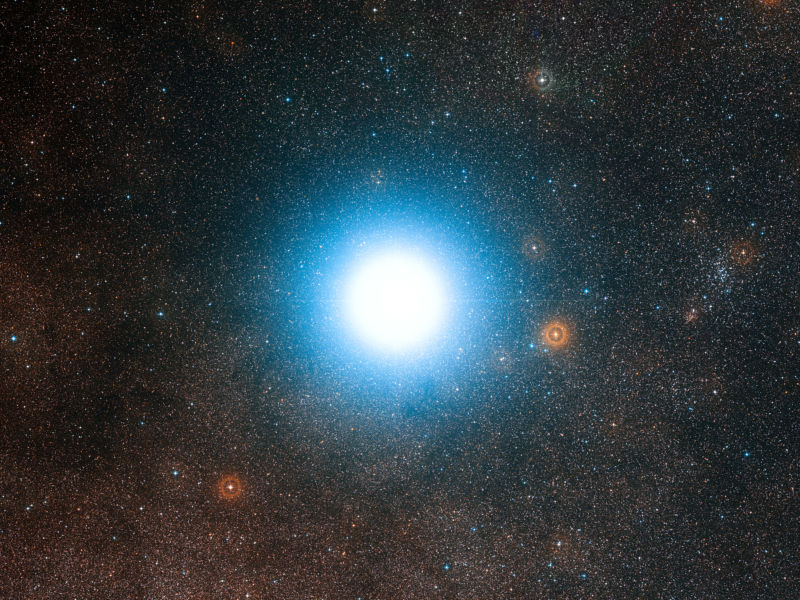Why things can look like they’re moving faster than light

Enlarge / Alpha Centauri, which features prominently in our explanation. (credit: ESO/Digitized Sky Survey 2 Acknowledgement: Davide De Martin)
Earlier this week, we covered astronomers' discovery of fast-moving jets of particles, produced by the object that resulted from a collision of neutron stars. The jets were imaged at two different time points, roughly half a year apart. During that time, the jets appeared to be moving faster than light itself when viewed from Earth.
In the article itself, I mentioned the "viewed from Earth" part to indicate that this apparent speed was a matter of perspective and that the jets were not actually outpacing light. I did that because I would need a separate full-length article to explain how that works. But, naturally, I got called on this in the comments-everyone knows nothing moves faster than light, so how could I possibly just skip over the fact that something looked like it was doing so?
As I said, an explanation would demand a full-length article. So that's what you're getting.
Read 12 remaining paragraphs | Comments